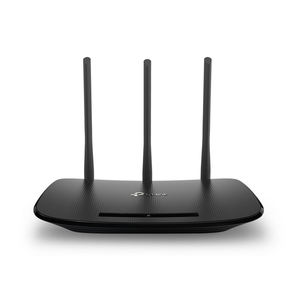(136187 products available)














































































































































































































































A WiFi router combines a router and an access point to create a wireless local area network (WLAN). It connects a wide area network (WAN)—usually the internet—to a WLAN through concurrent radio waves. The router part of a WiFi device will direct data between the internet and wireless-enabled devices, while the access point will broadcast WiFi under the router's authority.
Types of WiFi routers include;
The features and functions of a WiFi router are critical to its overall performance because they determine what kinds of tasks it can help users achieve. They also influence the router's selection of a router to connect to a network.
Transmit and Receive Data:
A router's key purpose is to send and get data through radio signals. The router transforms the digital information in a device into radio signals and transmits them wirelessly. It then receives signals sent over wireless networks from other devices and converts them back into digital data.
Frequency Bands:
Most modern routers operate on two frequency bands: 2.4GHz and 5GHz. Lower frequency waves, such as those on the 2.4 GHz band, can travel farther, while higher frequency waves, such as those on the 5 GHz band, can carry more data faster. The tradeoff is that lower frequency waves are more prone to interference from other wireless networks and gadgets like cordless phones and microwave ovens that use radio frequencies. Because of this, the 2.4 GHz band has less interference, allowing its waves to travel farther into a house or office.
MIMO Technology:
Many modern routers with multiple antennas use MIMO (multiple-input, multiple-output) technology. MIMO technology enables a router's antennas simultaneously to send and receive data from multiple devices. It significantly increases the data throughput and range of WiFi connections.
Beamforming:
Some routers are equipped with beamforming technology, which helps improve WiFi coverage. Traditionally, a wireless router sends the same signal in all directions equally. With beamforming, the router adjusts the signal based on where the connected devices are located to optimize the signal in that direction.
Security:
Staying safe online is essential for every internet-connected device, including a WiFi router. To help keep a network safe, WiFi routers have built-in software that protects it from cyber threats.
Detachable Antennas:
Certain routers come with removable antennas that allow upgrades, which makes it easy to optimize wireless coverage and strengthen WiFi range and performance.
App or Web-Based Management:
The convenience of managing a WiFi router from a smartphone app or web-based interface is helpful for maintaining network health. A WiFi router comes with a dedicated mobile app or web-based interface to allow users to manage settings and preferences.
The broad use of a Wi-Fi router to connect to the Internet has resulted in it becoming an important part of many public spaces. Here are some common applications of Wi-Fi routers:
Apart from checking the price, which is extremely important for any business, buyers may want to think about features like the router's security and how easy it is to manage and set up.
Here are some other factors to consider when choosing routers for sale:
Router Type
Decide on the router type. Relying on the number of users and the kind of online activities, find out if a single or multi-band is adequate. For businesses with multiple users and heavy bandwidth demands, a multi-band router may be suitable.
Coverage Area
If the business is situated in a large office space or needs Wi-Fi coverage outdoors, consider high-powered routers or mesh systems. This can save the trouble of having to upgrade or add to the system later on.
Speed & Performance
Evaluate Internet speed and bandwidth requirements to ensure the router can handle necessary activities without slowdowns. This is crucial because it affects the router's price. For activities like online gaming and video streaming, buyers should look for higher speeds and better performance from the router. This is important because these activities require lots of bandwidth and need a router with good specs to work well.
Ports/Connectivity
Consider the number of devices that need to be connected via Ethernet cables and any additional peripherals that need to be connected to the router.
Security Features
Look for routers with built-in security features such as firewalls, intrusion detection systems, and support for virtual private networks (VPNs) to protect the network and sensitive data.
Management & Configuration
Choose a router with user-friendly management tools and intuitive configuration processes to streamline setup and ongoing management tasks.
Q1: What are the advantages of WiFi 6 over WiFi 5?
A1: The benefits of WiFi 6 are better coverage, faster speed, longer battery life, and high efficiency. It is suitable for different environments, especially dense areas like stadiums, offices, and airports.
Q2: How many devices can a wifi router support?
A2: There is no specific number of devices a Wi-Fi router can accommodate. Ideally, a router can handle up to 256 devices on a Wi-KI 6 network. However, one may experience connectivity issues. A Wi-Fi forces network, human, or device to intentionally drop some, among many others, can help spread the load by using different frequencies.
Q3: What factors influence a router's selection?
A3: The environment where the router will be deployed, the area to be covered, the number of users/devices expected to be connected, the type of applications to be run (bandwidth required and whether it needs to be real-time or not), and budget are all important factors influencing router selection.
Q4: How often should a wifi router be upgraded?
A4: Upgrading the WiFi router every four to five years is a good idea to ensure access to the latest features, security systems, and technology.